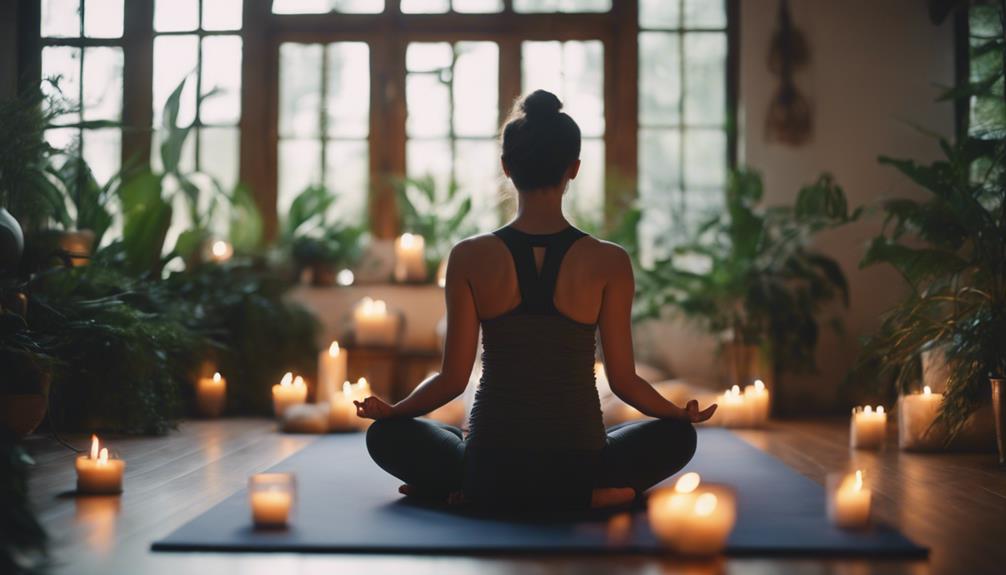What Size Yoga Mat

Yoga is a transformative practice that enhances physical health, mental clarity, and emotional balance. However, to fully enjoy the benefits of yoga, choosing the right equipment is essential. Among the most crucial items is the yoga mat. With a variety of sizes available, it’s important to understand what size yoga mat best suits your needs. In this post, we’ll explore the different dimensions, materials, and considerations that can help you find your ideal yoga mat size.
Understanding Standard Yoga Mat Sizes
When shopping for a yoga mat, you will encounter various standard sizes. The most common dimensions are 68 inches (173 cm) in length and 24 inches (61 cm) in width. This size is suitable for most practitioners, offering enough space for various poses and movements. However, if you’re taller than 6 feet, consider opting for a longer mat, typically 72 inches (183 cm) or even 84 inches (213 cm). Wider mats are also available, with some stretching to 30 inches (76 cm), providing extra room for those who prefer to spread out during their practice.
#
Why Length Matters When Choosing a Yoga Mat
The length of your yoga mat is crucial for comfort and effectiveness during your practice. A mat that is too short can lead to difficulties in performing certain poses, especially standing or lying down poses where your body extends beyond the mat’s edge. Taller individuals may find that a standard mat does not accommodate their full range of motion. Selecting a longer mat ensures that you have enough space to stretch and move freely without any interruptions, allowing you to focus entirely on your practice.
Related Posts:
#
Width Considerations for Your Yoga Mat
While the length is essential, the width of your yoga mat also plays a significant role in your comfort. Standard mats are typically 24 inches wide, which provides ample space for most practitioners. However, those who prefer more room for side stretches or wide poses may benefit from a wider mat. Wider mats, up to 30 inches, provide additional comfort for those with larger body frames or for practitioners who enjoy more dynamic and expansive movements. The right width can enhance your yoga experience by allowing you to feel more grounded and secure.
#
Thickness: Finding the Right Cushion for Your Practice
Thickness is another critical factor to consider when determining what size yoga mat to purchase. Most mats range from 1/16 inch (1.5 mm) to 1/4 inch (6 mm) in thickness. Thicker mats offer more cushioning and can be particularly beneficial for those practicing on hard surfaces or for individuals with joint issues. Conversely, thinner mats provide better stability and connection to the ground, making them ideal for balance poses. Assessing your practice style and personal preferences will help you determine the ideal thickness for your yoga mat.
#
Material Matters: How it Affects Size and Comfort
The material of your yoga mat can influence its size and how it feels during practice. Common materials include PVC, TPE, and natural rubber. Each material offers different levels of grip, cushioning, and durability. For example, natural rubber mats tend to have a thicker profile, providing significant cushioning but may add weight. Conversely, PVC mats are lighter and typically come in standard sizes but may not be as eco-friendly. Consider the material that aligns with your values and comfort needs while also fitting within your desired mat size.
#
Portable Yoga Mats: Size for On-the-Go Practitioners
If you frequently practice yoga in different locations, portability is essential. Travel yoga mats are typically thinner and lighter, often measuring around 68 inches by 24 inches, making them easy to carry. However, some brands offer compact options that fold or roll up smaller, allowing you to fit them into a backpack or tote bag. When considering what size yoga mat to purchase for travel, think about the balance between portability and comfort. A mat that is too thin may compromise your experience, so look for a lightweight option that still provides enough support.
#
Personal Preferences: Customizing Your Yoga Mat Size
Ultimately, personal preference is a significant factor in determining what size yoga mat is best for you. Some practitioners prefer a standard size for versatility, while others may find that a custom size enhances their experience. If you have specific needs or preferences, consider investing in a mat that meets those criteria. For example, if you practice yoga styles that require more space for arm and leg extensions, opting for a larger mat can provide the freedom to explore your practice fully. Always prioritize what feels best for your body and your practice.
#
Conclusion: Choosing the Right Size Yoga Mat for Your Journey
When it comes to yoga, the right mat can profoundly impact your experience. Understanding the different sizes, thicknesses, and materials will help you make an informed choice that enhances your practice. Whether you are tall and need a longer mat, prefer additional width for comfort, or require a travel-friendly option, there is a perfect fit for everyone. By investing in the right yoga mat size, you create a supportive environment for your practice, allowing you to focus on growth, mindfulness, and well-being. Remember that your yoga journey is personal, and finding the right mat is just one step along the way. Happy practicing!How Long Yoga